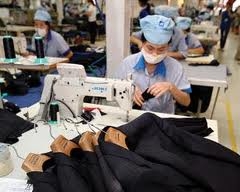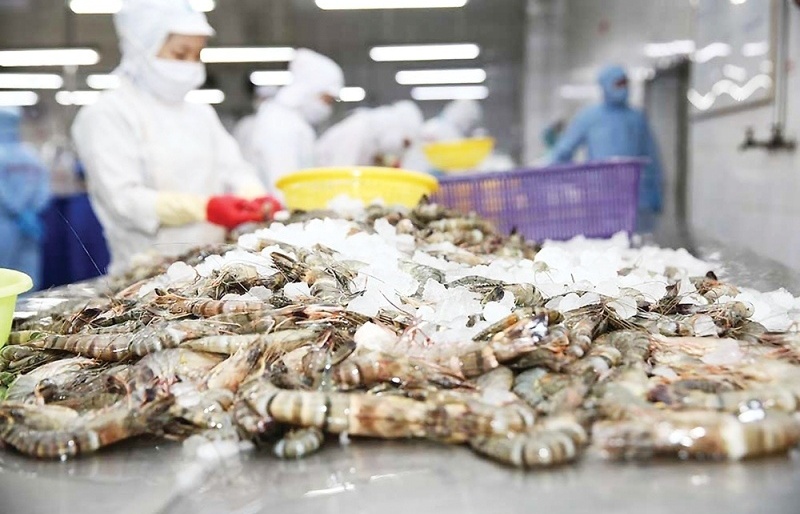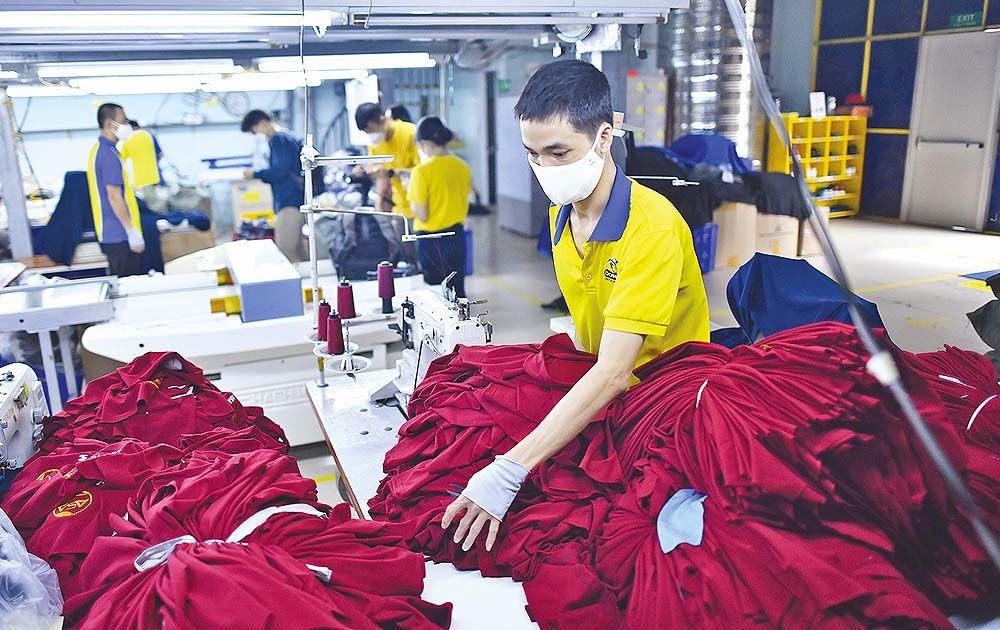Textile sector stitched into corner
 The local textile-garment sector currently faces a serious imbalance in production with 400,000 tonnes of raw cotton needed per year, whereas it can only source 3,000 tonnes from local sources, tantamount to 0.75 per cent of the total.
The local textile-garment sector currently faces a serious imbalance in production with 400,000 tonnes of raw cotton needed per year, whereas it can only source 3,000 tonnes from local sources, tantamount to 0.75 per cent of the total.
In respect to synthetic fibre, the demand for production is around 400,000 tonnes against actual supply capacity of 120,000 tonnes or 30 per cent of the total.
The sector’s largest bottleneck, however, relates to fibre, textile and dyeing fields. Vietnam is currently home to 3.6 million spindles turning out 514,000 tonnes of fibre per year with 65 per cent (tantamount to 334,000 tonnes) going for export.
The remainder is used to produce 1.2 billion metres of raw cloth per year serving garment enterprises.
Since Vietnamese cloth is below par for export, each year the sector imports 5.2 billion metres of cloth out of six million metres in total demand. Besides, 70 per cent of garment accessories must be imported.
The shortages have forced firms to shift from producing under FOB form where firms directly take part in material import and pattern design to turn out end products to complete export processing. This has significantly driven down profits.
In 2009, Binh Hoa Garment Company, with 400-500 workers, often produced under the FOB model. Through direct negotiations with export partners, the company enjoyed profit growth surpassing 20 per cent, said company director Phung Dinh Ngo.
However, from 2011 until present Binh Hoa has shifted into entirely performing export processing on the back of escalating input costs.
“The company has retrenched its scope to less than 100 labourers due to a sharp fall in profits,” said Ngo
Relying on imported materials has put scores of firms in a pickle regarding handling export contracts, with fines incurred from foreign partners due to late delivery.
To tackle these problems, Dung proposed businesses strive to shift from entirely export processing to producing under FOB or OBM (selling directly to supermarkets and trade centres abroad) forms to hike efficiency. This will demand revising current textile garment production structure.
“Strong investments are needed for dyeing and finishing links to boost local production of cloth to enable us to effectively tap the opportunities free trade agreements could bring,” said Dung.
Dung suggested scaling-up marketing locally-produced garment accessories to make the most of Haiphong-based $250 million Dinh Vu Polyester Fibre plant capacity.
With a capacity of 175,000 tonnes per year, the plant, the first of its kind in northern Vietnam employing world’s latest technology, aims to ensure stable supply of about 40 per cent of materials needed for Vietnam’s textile industry, helping save about $400 million per year.
What the stars mean:
★ Poor ★ ★ Promising ★★★ Good ★★★★ Very good ★★★★★ Exceptional
Related Contents
Latest News
More News
- Mitsubishi Estate launches Logicross Hai Phong - a milestone in logistics evolution (November 20, 2024 | 14:32)
- Semiconductor workforce partnerships deliver industry-relevant training (November 20, 2024 | 10:58)
- German Quickpack to invest $31.7 million in Long An province (November 20, 2024 | 09:31)
- Foreign-invested enterprises drive logistics investment in the southeast region (November 20, 2024 | 09:27)
- Chile visit underscores trade benefits (November 19, 2024 | 10:00)
- Trump’s second term impacts sci-tech activities and industry 4.0 technologies (November 18, 2024 | 10:00)
- Vietnam eyes nuclear revival to bolster energy security (November 14, 2024 | 16:46)
- Kyokuyo completes $13.5 million seafood factory in Vietnam (November 14, 2024 | 12:19)
- VinFast receives $3.5 billion funding from Vingroup and Pham Nhat Vuong (November 14, 2024 | 06:38)
- Localities sprint to reach FDI targets (November 13, 2024 | 10:00)


 Tag:
Tag:




















 Mobile Version
Mobile Version